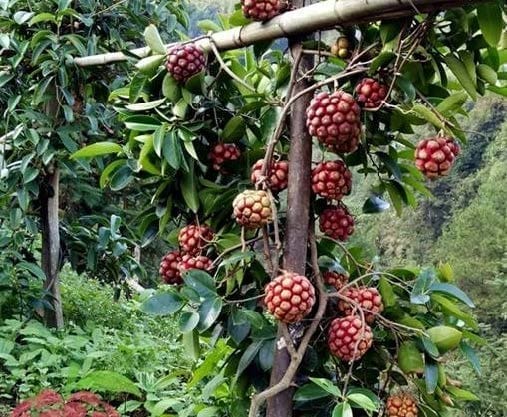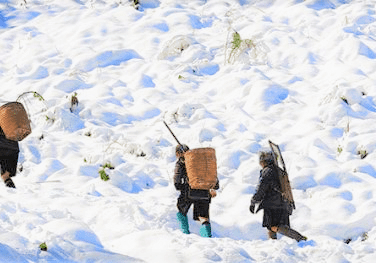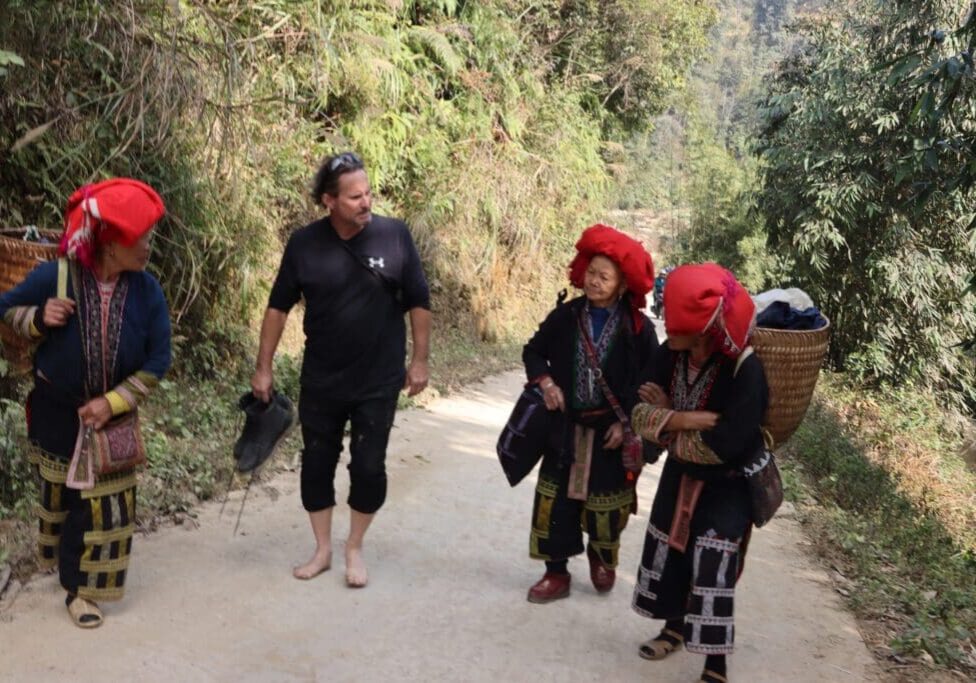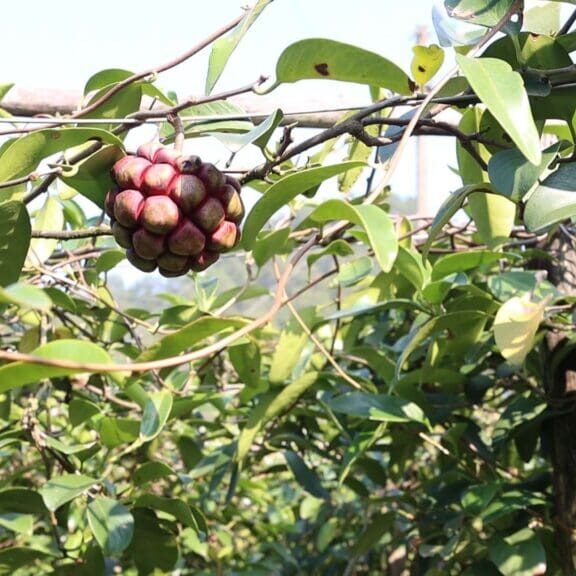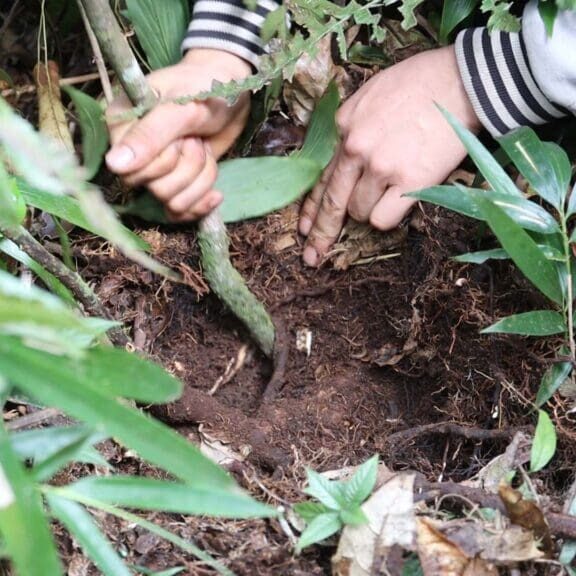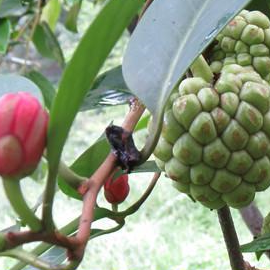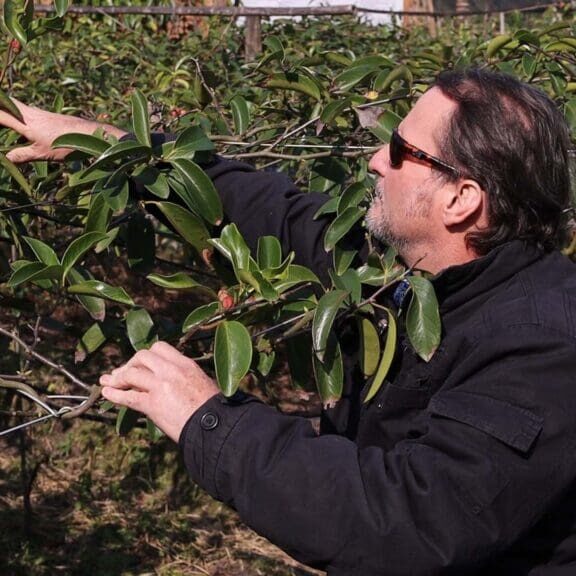Genus: Kadsura
Introducing the "fruit of the immortals" or Dragon™ Vine, a delicious, fruity berry with a wide spectrum of health benefits. Farmers and tribes in regions of China and southeast Asia have grown this berry for centuries until economic changes resulted in wide swaths of deforestation. Fortunately, this plant is perfectly suited for planting zones within the Pacific Northwest and California regions.
Common Name: The Fruit of Longevity
Cold-Tolerant Kadsura: Snow and Frost Survivors
Dragon™ Vine Fruit for a Long Life of Beauty
Dragon™ Vine Pests and Disease
"The Fruit of Longevity" the "Dragon™ Vine"
An exotic multi-purpose evergreen fruiting vine introduction.
NATURAL RANGE AND DISTRIBUTION IN COOL MOUNTAIN REGIONS OF CHINA,
Featuring additional clones from hill tribes in the mountains of S.E. ASIA.
The Elusive High-Elevation Kadsura
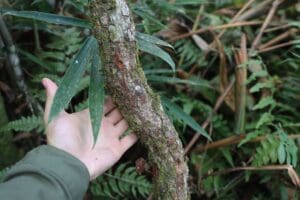
Successful Kadsura Dragon™ Vine Propagation
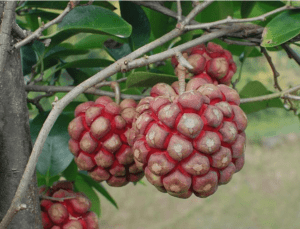 Kadsura Dragon™ Vine propagation can easily be accomplished in regions similar to San Francisco and South to San Diego, or North to Portland or Seattle, or even the island of Vancouver near Sannichton and Nanaimo Canada, where kiwi fruit have been successful – albeit in a protected microclimate- offer exciting opportunities for this new Kadsura Dragon™ Vine fruiting vine.
Kadsura Dragon™ Vine propagation can easily be accomplished in regions similar to San Francisco and South to San Diego, or North to Portland or Seattle, or even the island of Vancouver near Sannichton and Nanaimo Canada, where kiwi fruit have been successful – albeit in a protected microclimate- offer exciting opportunities for this new Kadsura Dragon™ Vine fruiting vine.
Deep hard freezes or long-duration below 10* should be expected to damage or kill these plants if left unprotected. The far northern regions where this plant may thrive outside of China are yet to be established. Since the plant is exceptionally vigorous and fast-growing, and since flowers are formed on one-year-old and often new growth, this leaves opportunities for growers in cold winter areas to apply some type of winter protection along the trunks. We welcome growers to participate in adding knowledge for the cultivation in temperate climes across the world.
Small plants should always be protected from hard freezes while young or in fast growth. In very warm summer areas, hot dry temperatures consistently above 95* will cause the plants to enter a type of ‘summer dormancy period’ and slow growth until cooler weather returns.
Kadsura Dragon™ Vine Propagation in the USA
It is believed that the first experimental fruit plantings outside of China were made in California by Katy Warren and Jerry Black on the Green Gold Ranch in Chico California, in the 1990s.
“The Vines grew rapidly, often growing over 12 over feet a year,” Katy Warren reported of their planting. “It’s a very tough plant, and so pretty, I intend to retire by growing these on my farm.”
Kadsura Dragon™ Vine Fruit: A Giant Berry-Like Fruit
When talking about the Kadsura Dragon™ Vine fruit in 1999, Katy Warren, who is known as the ‘Queen of Kiwano Melon’ for her national introduction of the brilliantly yellow-and-neon-green horned cucumber; now sold to nearly every major food chain in the USA, remarked, “It’s just crazy that this ‘giant raspberry-like fruit, isn’t found in stores across the US; that’s our goal”.
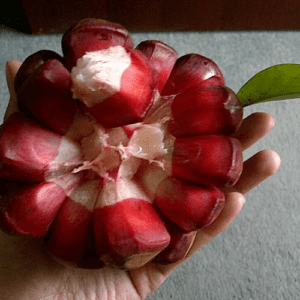 “This vine is remarkable because it remained hidden away and was uncultivated for so long” reported Jerome Black, who made several expeditions in the 1990s to find it.
“This vine is remarkable because it remained hidden away and was uncultivated for so long” reported Jerome Black, who made several expeditions in the 1990s to find it.
“The four species that Katy and I planted have flavors that range from mild-grape and lychee-flavor to light peach or cherry, although all very subtle and floral in flavors. The fruit is beautiful to look at and has a lot of curb appeal.”
Black speculated that the remoteness of China’s hill tribe regions, with the fact that China had been off-limits to most foreign travelers, especially between 1966, and until re-opening to solo tourist travel around 1989, are what kept this giant berry a botanical mystery. “It had simply been a fruit traded in indigenous markets in remote mountain areas that were very hard to access, and some regions still are”, He added. “It was a relative secret traded between hill tribes who made the original discovery hundreds of years ago.”
The Kadsura Dragon™ Vine fruit has a high edibility rating that is often used raw as fresh fruit, or even cooked. Aside from the tasty fruit, they are astounding in size and look like a giant raspberry or blackberry, with fruits as large as 3 to even 6 inches in diameter. Fruits weigh from half a pound to even 2 pounds each, which are typical from each harvest. These vines are heavy producers and known to produce up to 2 to 3 tons per acre.
Fruits: An Expensive Delicacy and Natural Medicine
Kadsura's versatility and utility has a long history of medicinal use among the native hill tribes in China and north SE. Asia.
This exotic fruit is sometimes pressed into juice or wine by indigenous groups high in the mountains. Fruit soaked in alcohol rice wine are preserved over the winter as a health tonic.
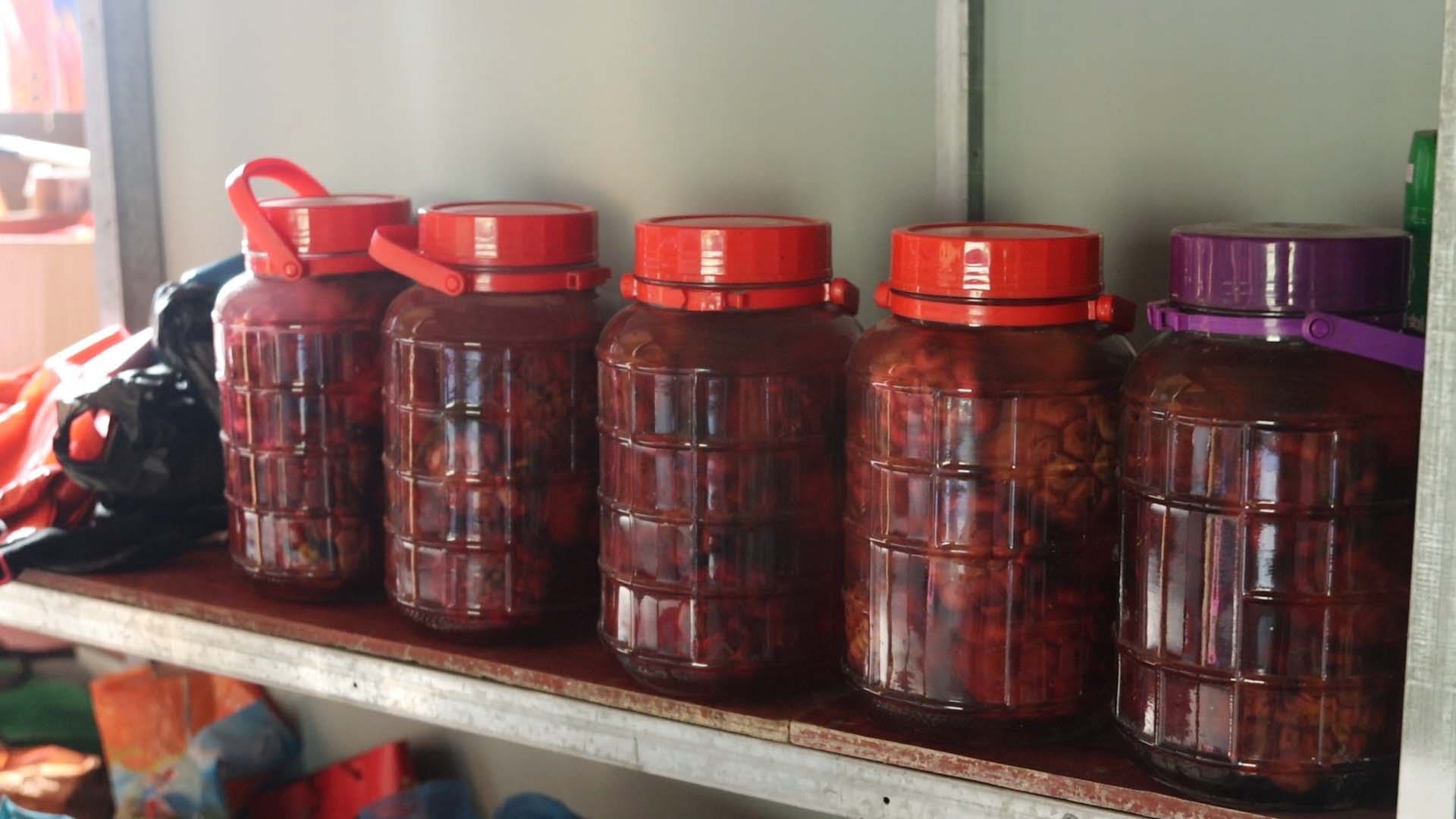
Fruit has high nutritional and medicinal value that adds beauty as an evergreen fruit and natural medicine all in one.
Kadsura Dragon™ Vine Medicinal Properties
As a medicinal, the Kadsura Dragon™ Vine’s roots and stems can reduce swelling and pain, used for the treatment of stomach disease, rheumatism, bone pain, and as a poultice to reduce bruises. Dragon™ Vine Fruit and dried vines are also considered to be aphrodisiac, pectoral, and referred to by the Chinese as ‘Tonic Yin Medicine’.
Kadsura Dragon™ Vine Fruit has high nutritional and medicinal value.
Natural drug compounds extracted from Kadsura Dragon™ Vine
 Most of the Kadsura Dragon™ Vine medicinal research taking place with the natural drug compounds is taking place in China where it originated:
Most of the Kadsura Dragon™ Vine medicinal research taking place with the natural drug compounds is taking place in China where it originated:
- In the selected Medical compendium of Guanxi China, the chemical composition is studied for use in traditional Chinese medicine with seeds that contain a type of lignin call called Kadrura Lignan B.
- The stem contains a new type of lipid called Neo-Kadsuranin and Acetlyl-B, and Kadsurain A.
- Dragon™ Vine also contains Propionyloxonkadsurane among other essential alkaloids, benzo alkaloids, and a number of other novel compounds.
What does this all mean for practical application?
The Kadsura Dragon™ Vine plant is considered medicinal and can relieve swelling and pain, used to treat stomach disease, rheumatism, and that laboratories are screening novel Kadsura in compounds for potential anticancer treatments.
The roots and stems are harvested, dried, and stored throughout the year, roots are dried washed, and cut into small sections, and packed for distribution to the herbalist and is becoming rarer to see in indigenous markets.
ANCIENT HISTORY, EXPLORATION AND MODERN INTRODUCTION to California and Oregon >
The Kadsura Dragon™ Vine Cultivation in the USA
In the early ’90s, a series of Kadsura Dragon™ Vine expeditions into the wilds of montane and subtropical China was made by Jerome Black, of Oregon, focusing his work in Guizhou, Hubei, Yunnan, Guangxi, and with indigenous hill tribes on the borders of Myanmar, Laos, and Vietnam. After being arrested in China in 1991 and again in 1992, for his research in remote tribal regions, Black teamed up with Katy Warren of ‘Green Gold Ranch’ in the late 1990s to grow the plants near Chico California. Warren soon brought in Jimmy and Oscar Hernandez, who were founders, President, and V.P. respectively of the mission-driven “Melissa’s World Variety Produce” of Los Angeles California.
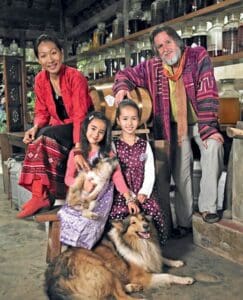
In 1999, new plant material for the Kadsura Dragon™ Vine was brought in through another expedition. This time sponsored by Warren and lead by Black, with Black getting arrested a third time 80 miles S.E. of Jinhong China on the border near Myanmar. Black was hauled into jail with seeds and hundreds of cuttings, and put under arrest in Jinhong. Dr. Josef Margraf of the German NGO working in the area negotiated Black’s release with significant leverage and finances through his German NGO.
Soon after Black’s release more Kadsura Dragon™ Vine clones of the ancient cultivars secretly made their way from to California, Oregon, and Costa Rica. It was reported that Black, using multiple passports over seven years, had stashed away hundreds of cuttings and seeds somewhere between Vietnam and Hong Kong before his arrest.
During those years, a journal of fruit exploration was published for circulation in 1994, and 30,000 copies with black and white images of the Kadsura Dragon™ Vine were sent to prominent US Botanical gardens, farmers, NAFEX members, and curators of American nurseries. The journal propositioned these experts to identify and name this enigmatic fruit. Most guessed it to be a species of Annona or Pandanus fruit, which it resembles.
But the Kadsura Gozillaberry continued to remain a fruit of mystery in the U.S., relegated to the researchers in China who were diligently working for its ultimate release to Chinese farmers.
In 2014, an image of the iconic berry was put online by another American rare fruit explorer who traversed Laos and northern Thailand and proposed it was a type of Annona species.
Kadsura Dragon™ Vine Cultivation Range, Easy to Grow
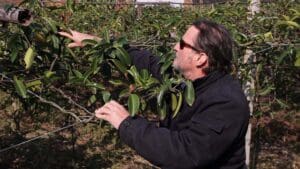 Kadsura Dragon™ Vine cultivation management for the “God peach” is easier than most fruits. They can be grown similar to grapes or kiwi vines and are more pest-resistant than grapes. The plants do not require much pruning, are typically pest free of pest or disease.
Kadsura Dragon™ Vine cultivation management for the “God peach” is easier than most fruits. They can be grown similar to grapes or kiwi vines and are more pest-resistant than grapes. The plants do not require much pruning, are typically pest free of pest or disease.
When growing in an open position it is recommended to set a pole or build a frame or an arbor like a grape or kiwi.
Dragon™ Vine Cultivation Structures
A trellis or arbor can ensure stable production and high-yield for many years.
Dragon™ Vine plants are equally healthy under the deep shade of established forest or planted under fruit orchards.
Today, this Kadsura varietal offers a wide range of adaptability and should be successful through many areas of the United States and indeed the world. It has relatively the same growing range as large kiwi fruit or even cool season fruits that like long growing seasons.
Plants have a wide range of fruit culture in the USA and are highly adaptable. They prefer a sheltered position with some moderate shade, but can also handle full-sun positions.
The vines create a type of shade for themselves as they twine up and cover arbors or a tree.
Kadsura Dragon™ Vine Flowers and Pollination
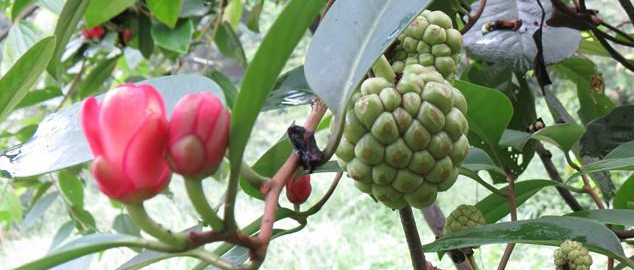 Dragon™ Vine Flowers are usually produced on the current year’s growth and are beautiful, rose-colored, 1 inch by 1 inch, and similar to plants in the magnolia family which is an ancient relative. Kadsura, as noted by Saunders, is found in fossil records by paleobotanist, in both North America and Europe, dating back tens of thousands of years.
Dragon™ Vine Flowers are usually produced on the current year’s growth and are beautiful, rose-colored, 1 inch by 1 inch, and similar to plants in the magnolia family which is an ancient relative. Kadsura, as noted by Saunders, is found in fossil records by paleobotanist, in both North America and Europe, dating back tens of thousands of years.
Kadsura can benefit from hand pollination when flowers open. Kadsura Dragon™ Vine flowers are often self-fertile or dioecious. It is recommended to plant several vines for the best pollination.
Dragon™ Vine fruits can develop at nearly every part of the plant on new growth, followed by heavy production of berries.
Planting several plants together ensures the best pollination.
Habitat for Growing the Kadsura Dragon™ Vine
The Kadsura Dragon™ Vine grows best in soils with moderate fertility, well-drained with neutral to acid soil, produce the fastest growth.
It does excellent in semi-shade even deep shade.
 The roots of the Kadsura Dragon™ Vine tend to be shallow like kiwis, and since its native habitat receives rain in the summertime they benefit from deep mulching in arid climates.
The roots of the Kadsura Dragon™ Vine tend to be shallow like kiwis, and since its native habitat receives rain in the summertime they benefit from deep mulching in arid climates.
The roots tend to grow in the top one or 2 feet of the soil so they should not be tilled close to the plant or fertilized too heavily.
Weak acidic sandy loam is the most suitable for planting.
Moisture Levels for Growing the Kadsura Dragon™ Vine
If possible, the soil should be kept moist during the growing season, especially for smaller plants. Larger plants can take weeks of drought.
We have seen these plants handle several weeks of drought in summer and even a couple of months of drought during winter dormancy. The vines, with their aromatic roots, are fleshy and rebound quickly once water is applied. For the largest fruit, moisture is preferred evenly through a dry hot season.
They are not particularly demanding on what soil type they have, but sandy loam soil is the most suitable and creates the fastest growth. They often do well planted under peaches, plums, persimmons, pears, apples, or grapes. They can also be grown as bonsai.
In Southern States of the USA they can be planted anywhere from October through May. In colder northern states of the U.S., they should be planted anytime from early spring until late summer.
Planting multiple plants in the same vicinity can greatly enhance pollination and increase yield.
Diverse plantings are suitable to many locations in the yard or directly in a forested region
Kasdura Dragon™ Vine plants are suitable on steep hills under deciduous or even evergreen trees.
The roots gradually spread out from the stock and grow well in shallow or deep.
Planting on steep mountain slopes, climbing over a tree are the natural habitat for them.
When planting in an orchard the hole does not have to be too deep or too wide. Kadsura will benefit from loose soil with heavy much or leaf matter on top of the ground.
Do not plant them in water-logged soil. Although the roots can handle standing water for a short time, a raised bed or ridge for better drainage can be made if the soil is boggy and wet for long periods of time.
Fertilizing regiment
The plants like natural sources of calcium, magnesium and phosphorus mixed into the soil. Compost and leaf matter is suitable and the fruits do well under organic cultivation, which is highly preferred.
Pruning and Training the Kadsura Dragon™ Vine
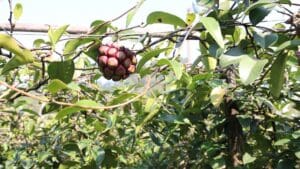 It is not necessary to prune the Kadsura Dragon™ Vine. However, If pruning is desired, prune about one month before they flower in the late winter and spring.
It is not necessary to prune the Kadsura Dragon™ Vine. However, If pruning is desired, prune about one month before they flower in the late winter and spring.
Trimming extra branches or cutting out winter buds to create a more open structure for larger fruit production is sometimes recommended.
Scaffolding or trellis
When planting, a scaffolding or an arbor such as a kiwi arbor is useful.
Again, they typically do not need pruning but planting in a hedgerow, or even growing as a potted plant, one can trim mainly to control or shape as needed.
Bonsai
The Kadsura Dragon™ Vine makes an interesting and unique bonsai specimen.
Dragon™ Vine Pests and Disease
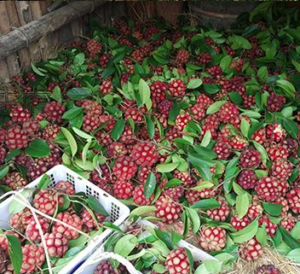 Dragon™ Vine pests and disease are limited as these plants have a strong resistance to disease.
Dragon™ Vine pests and disease are limited as these plants have a strong resistance to disease.
In China sometimes termites can harm the older roots or trunk and inchworms can do some damage to the leaves.
In China, pests if any, are controlled by scattering lime ash from burnt plants or trees. Sometimes chrysanthemum flowers are ground up in the water and sprayed on the plants to control inchworms or other bugs.
This is an easy growing plant that offers foliage and fruit in difficult terrains.
TRIBAL USES AND NOMENCLATEURE
Dragon™ Vine Fruit for a Long Life of Beauty
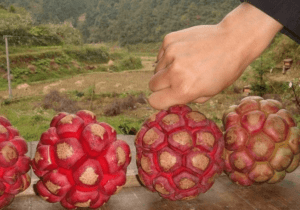 Ancient statues of Confucius often portray the noble wise-man holding “the peach of immortality” in his hand. While Confucius’ beloved fruit is often regarded as the ‘peach of immortality’, Black surmises, on his blog dragonvines.com that, “Kadsura or Dragon™ Vine Fruit, is the actual fruit of immortality of which Confucious so wisely expounded upon.” And many tribes in China agree, calling this noble berry, the “God Peach”, “longevity berry” and ” fruit of the immortals. ”
Ancient statues of Confucius often portray the noble wise-man holding “the peach of immortality” in his hand. While Confucius’ beloved fruit is often regarded as the ‘peach of immortality’, Black surmises, on his blog dragonvines.com that, “Kadsura or Dragon™ Vine Fruit, is the actual fruit of immortality of which Confucious so wisely expounded upon.” And many tribes in China agree, calling this noble berry, the “God Peach”, “longevity berry” and ” fruit of the immortals. ”
Tribes across mountainous China have multiple names for the Dragon™ Vine fruit, including ‘black tiger balls’ ‘fortified meals’, ‘mountain Dragon™ Vine’, and “red diamond fruit”.
In 1992, Jerry Black reported the name given to him by villagers in remote Guizhou as the “The black dragon crossing”, and “God peach”, harkening back to Confucius’ “peach of immorality”.
Black states, “When Katy Warren and I and introduced this fruit to the board of directors at World Variety Produce in Los Angeles; the largest distributor of exotic produce in the USA; we kept the species a secret and called it the ‘Dragon™ Vine’ since it was unknown outside of China at the time”.
Black tells us Maio tribes, for hundreds of years, have called it “fruit for a long life of beauty”
The last best fruit to come out of China.
The Hunt for Wild Kadsura
There is no doubt that wild Kadsura has been harvested for 800 years or more. Documented use is harder to find but recorded collection data, dates back about 400 years. (see Saunders)
In its native habitat, wild Kadsura is becoming increasingly difficult to find. Traces of these original plants in the forest still exist but are being pushed out by rural development, monoculture, and poor timbering practices.
In the 1990s Black’s expeditions focused on visiting numerous indigenous groups on seven expeditions in China. He reported that the remoteness and language difference between the hill tribes and their relative autonomy from the control of the Chinese Central government has kept this plant relatively secret. Kadsura was always harvested from the wild until recently.
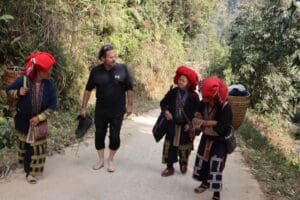
“When we returned in 2019 after twenty years, entire regions were becoming deforested and the vines were harder to find”, Black stated, “especially around Xishuangbanna and North Laos which was had been one of the most bio-diverse areas of the world”.
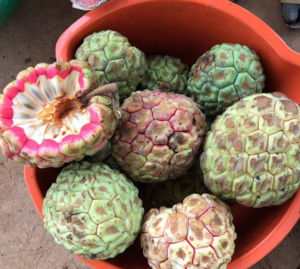
“This deforestation is particularly disheartening”, Black states,” vast regions have been clear cut and terraced for the planting of rubber trees to feed the demand for airplane tires. Some regions are nearly stripped of their biodiversity and once traditional hill tribes are now working as rubber-tappers instead of living from the bounty of the natural forest they enjoyed for the last 2,000 years.”
We speculate there were no known photographs of the fruits prior to 1991-92. The exception of one grainy color photo made around 1992 and obtained by Black from a researcher who worked in secret in a secret Chinese government program.
Black reports, “We had been looking for this in the wild, and found fruits in an indigenous village, which they called the “god peach”, the ‘longevity fruit’, and the ‘fruit for a long life and beauty’. In recent years the fruits have been planted and have become a feature for a new breeding program”
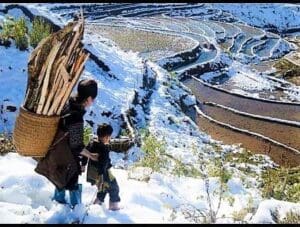
“We receive word of it in the early 90s while finishing an expedition into remote Shennongjia”, Black said. “about 350 miles up the Yangtze, east of Wuhan. It was before that mega-hydro-power dam was built. We simply jumped off the boat on the second day upriver near the town of Zigue, hiked two days in, and began searching” Zigue is now submerged under 200 feet of murky water I suppose.”
A lone researcher leaked out a grainy photo and given to Black and his partner. It came with the message that, “an urgent project to develop and then promote the great potential for a multi-purpose rare plant and exotic fruit.”
The Chinese government did all this work in secret at first in order to create an amazing new fruit that is both medicinal and evergreen ornamental.
These vines are now helping poor villages reap a high profit in high-end stores in faraway cities like Beijing, Chengdu, and Shanghai”



